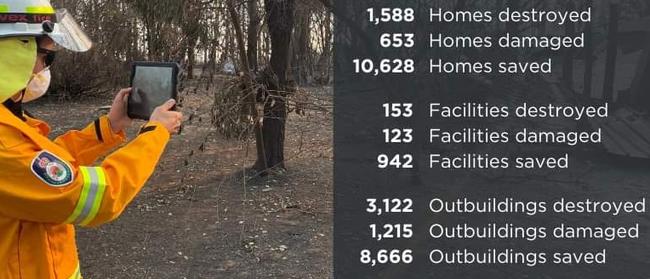NSW Bushfires: Gospers Mountain fire causes asbestos and drinking water concerns
We can reveal for the first time the total number of structures lost — and saved — during the horrendous Gospers Mountain mega-fire, and how asbestos and water quality are posing concerns.
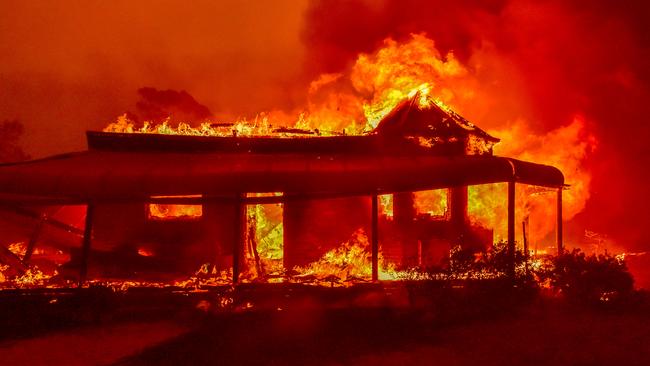
The Blue Mountains News
Don't miss out on the headlines from The Blue Mountains News. Followed categories will be added to My News.
- ‘We were lucky not to lose the train station’
- Man fined for lighting backyard fire during total fire ban
- Firefighters are lining up for this free bushfire tribute tattoo
The devastating Gospers Mountain mega-fire, which burned for weeks over Christmas, has claimed almost 100 homes.
The total number of buildings that were affected by the fire can now be exclusively revealed after the blaze was finally contained on Sunday.
“There were 96 homes destroyed and 1497 homes saved,” the NSW Rural Fire Services’ building impact assessment (BIA) team field coordinator for the Gospers Mountain fire, Bruce Cameron, said.
There were nine facilities (businesses and shops) destroyed and 174 facilities saved, and 209 outbuildings (including garages, art studios and caravans) destroyed, while 1061 were saved.
Fortunately no one died in the massive fire but now the clean-up of fire-affected buildings containing asbestos and the quality of water is posing public health concerns.
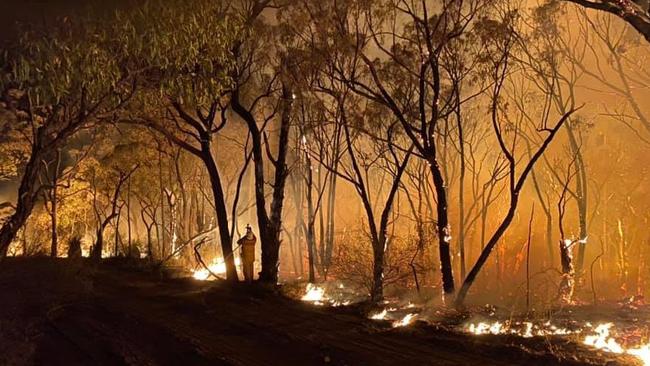

The BIA team checks for any potential risks associated with fire-damaged power lines, solar panels, gas mains and bottles, sewage, respiratory irritant, bulk flammable liquids, chemicals, copper chrome arsenic (CCA) treated timber, dangerous trees, structure instability, sharps and fall hazards — and asbestos.
“About 60 per cent of the places they’ve looked at have been suspected asbestos; that will probably come back 40 per cent after testing,” Mr Hansen said with reference to the Gospers fire area.
“It’s a public health concern and that’s why our teams spray glue on it, to try and stabilise it.
“If asbestos is identified, the owners will need to speak with their insurer or, if they’re uninsured, the Public Works Advisory.”
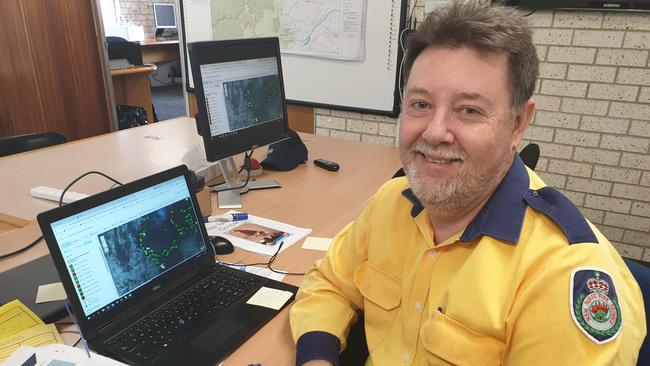
Mr Hansen currently has two to three teams of two out in the field every day, checking on areas affected by the broad-reaching Gospers Mountain fire in the Hawkesbury, Blue Mountains, Lithgow/Chifley, Cudgegong, Lower Hunter, Hunter Valley and Central Coast areas.
They are from the RFS, NSW Environment Protection Authority, Public Works Advisory, and licensed asbestos assessors PRM who assist in the management of risks associated with the removal of asbestos.
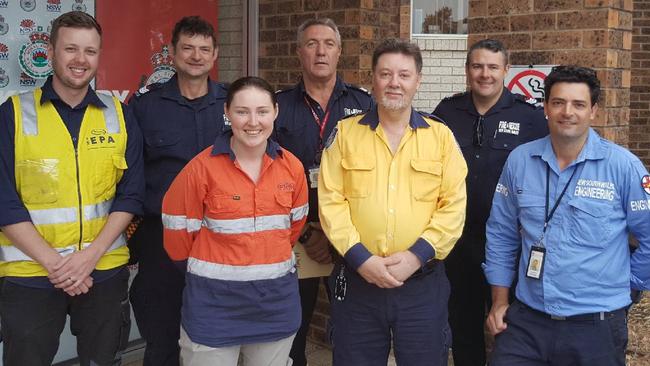

On January 8 alone, field officers inspected 36 structures on 24 properties in the Hawkesbury.
“We do five 12-hour shifts,” Mr Hansen said.
“We have been collecting initially the numbers (of fire-impacted structures) and then going back to do a hazard assessment and putting up signs.”
Mr Hansen said they are finding a lot of people are concerned fire retardants may have affected their drinking water.
“It’s not toxic but you wouldn’t drink it; fire retardant will make the water smell terrible and taste salty,” Mr Hansen said. “If fire retardant has entered your tank, you need to empty it.”
While it’s not suitable for drinking by humans or animals, it can be used for irrigation and firefighting, he said. If swallowed, rinse your mouth out with fresh water and then consult a doctor.
Gospers Mountain fire building impact assessment, as at January 7:
- 96 homes destroyed
- 42 homes damaged
- 1,497 homes saved
- 9 facilities destroyed (includes business and shops)
- 17 facilities damaged
- 174 facilities saved
- 209 outbuildings destroyed (includes sheds, detached garages, art studios and caravans)
- 1,061 outbuildings saved
